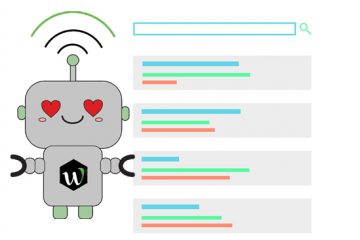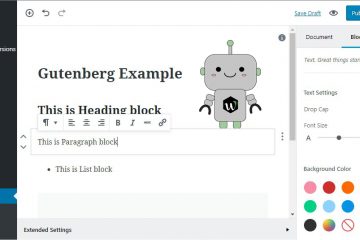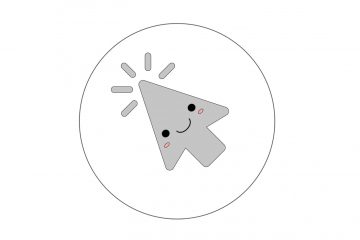[vc_row][vc_column][vc_column_text]Google AdWords is a multifaceted self-serving advertising platform. It enables businesses and advertisers to set a budget, monitor user engagement, and ultimately quantifies return on investments.
AdWords is broken into 5 separate but intertwined core networks for businesses to advertise their products and or services. Search Network, Display Network, Shopping Campaigns, YouTube & App Promotion.
Search ads are triggered and served through Google’s proprietary search engine and search partners. These ads are demarcated in various ways to distinguish themselves apart from Google’s organic search results. The primary ways to target keywords is through ‘Match Types’. There are four distinct match types which can be leveraged by businesses to put themselves in front of searchers.
- Broad Match – Also known as straight broad, this match type will generate the most queries for your keyword regardless of relevance to your landing page or product/service. If you are bidding on “cat” you could potentially show search queries related to “dog” if the search user’s cookies have anything remotely to do with cats.
- Modified Broad Match – Designed to combat advertiser loses due to Straight Broad, modified broad match is controlled through the ‘+’ appendage which is placed in front of any word which must be included in the search query. If someone searches for ‘restaurants near me in Little Rock, Arkansas’ you as the advertiser would want to include the keyword ‘+restaurants +near +me’ so long as the campaign is targeting Little Rock or Arkansas – you will enter the bid auction to show for that search query.
- Phrase Match – This match type acts the same way as it sounds, if you are bidding on “ducks” then you will show up for ‘red ducks’, ‘ducks red’, ‘red ducks sale’ and so on. Essentially you are bidding for words that are surrounded by many other ‘phrases’.
- Exact Match – Although it sounds straight forward, an exact match has been altered within recent times to carry different weight to its pull. In the past – if you used exact match, you would show up on exactly what you were typing. Today, if you bid on exact, you will also receive variants, misspellings and sometimes synonyms. If you bid on “tree” you could also show up for ‘trees’, ‘trrees’, ‘tres’ and other variants that are close to but are not exactly what you are trying to show up on.
- Negative Keywords – This isn’t so much a match type as it is a method to control your search queries. Making sure that two match types are not fighting over the same search query is imperative to keep AdWords costs down. Otherwise, you are bidding against yourself through different match types for the same user search query and attempting to enter the exact same auction.
[/vc_column_text][/vc_column][/vc_row][vc_row][vc_column][vc_column_text]Display Ads can also be built or imported to AdWords to create visual banners to increase brand awareness or sale promotion. The Google Display Network works hand in hand with the Google AdSense program to be able to deliver inventory to advertisers all over the globe. Display marketing is more often than not a very cost effective method of spreading the brand or product image through hundreds of thousands of users on a daily basis – however, it has many dangerous pitfalls and countless horror stories of AdWords management. The Display Network can be controlled in numerous ways, from re-targeting users, to direct placement, to demographic targeting and even lightbox product promotions such as those you see from your friendly local grocery stores.
Direct placement is the act of selecting a website URL (so long as it has opted into the AdSense program) – and targeting it with your display and image ads. If you know your users tend to visit weather.com, you can target specifically weather.com and tailor your display ads to carry both your company message while blending in with the weather theme of the website itself.
Re-Targeting is the most popular form of display advertising through GDN. To be able to do so – your website must either have Google Analytics installed active on all pages (with re-marketing settings turned on), an AdWords remarketing pixel placed on all the important pages or leverage third party pixels to collect and re-target your users.
Demographic targeting consists of building a user profile to better relate your product or service through engaging visual content. A 60-year-old grandma will be engaged with different visuals than that of a 19-year-old male college sophomore. Understanding who you are targeting and in what environment allows you to tailor the display ad copy.
Shopping Campaigns are typically fed through a spreadsheet based feed that houses all of your products. Information such as SKU, price, quantity and other important identifiers is stored here and passed on to Google’s Merchant Center. The only control you have over a shopping campaign is through negative keywords, promotions or sales, product grouping bids and the items you feed to Google. Ads themselves come in the form of product images that you provide to Google.
One other option with product ads or shopping campaigns is to create re-targeting campaigns based off any audience that interacted with your product pages which allow you to follow them through their search journey so long as they are on Google search or any website opted into the AdSense program.
YouTube Ads come in many different shapes and forms – from video to display, to text. There are 6 formats of YouTube ads. Display ads, which show to the right above the video suggestions lists and sometimes may also appear underneath the video. Overlay ads, these are transparent ads that hover over the video. Skippable video ads, self-explanatory 5-second skip ads. Non-skippable video ads, which is what Google wants to transition to – these can be up to 30 seconds long but the 8 second is the most effective. Bumper ads, 6 second long ads which lead up to the video and cannot be skipped. Sponsored cards can be used to leverage other display content such as products.
Do you happen to have an application for IoT devices? Well you can promote it with app promotion campaigns. The first thing you need to figure out is if you want to promote your application through Search, Display or YouTube. There are three main strategies or ad formats for applications. Universal app campaigns, these are auto-generated and lets your show your application across all three networks. Mobile app installs are used to direct people to the app store so that they can download your application. This is considered more direct app marketing. Mobile app engagement is used as a re-targeting strategy to bring back users to your app. 77% of users never use an app again 72 hours after installing. This is the reason why mobile app engagement ads come into play.
Resources for further information on AdWords and its networks:
App Campaigns[/vc_column_text][/vc_column][/vc_row]


